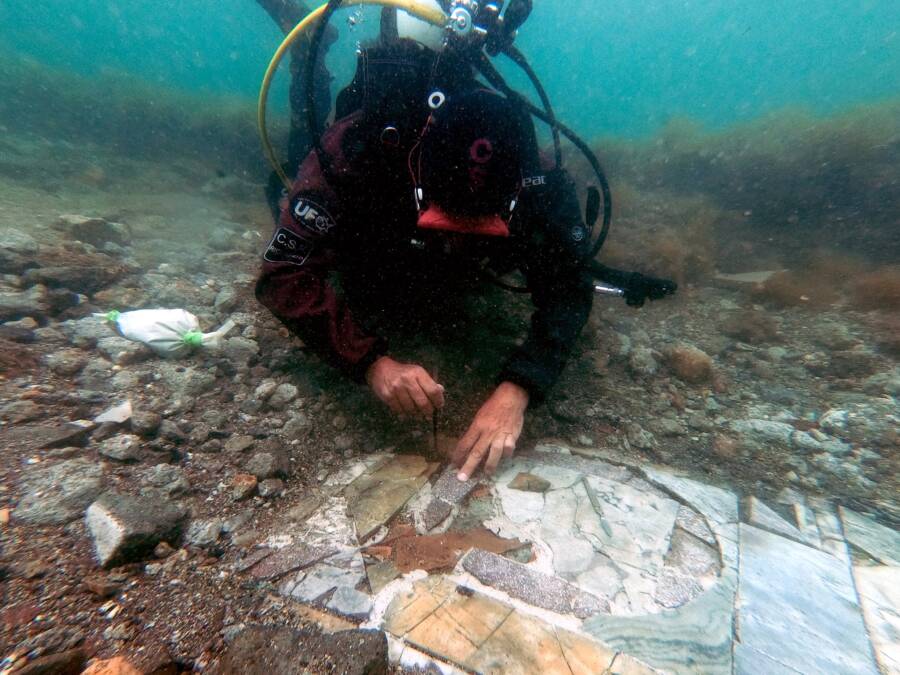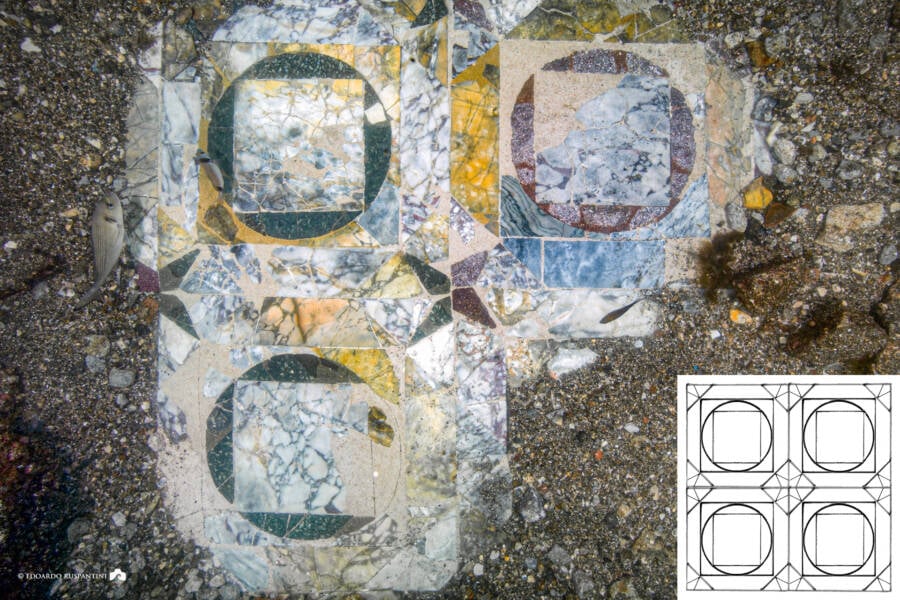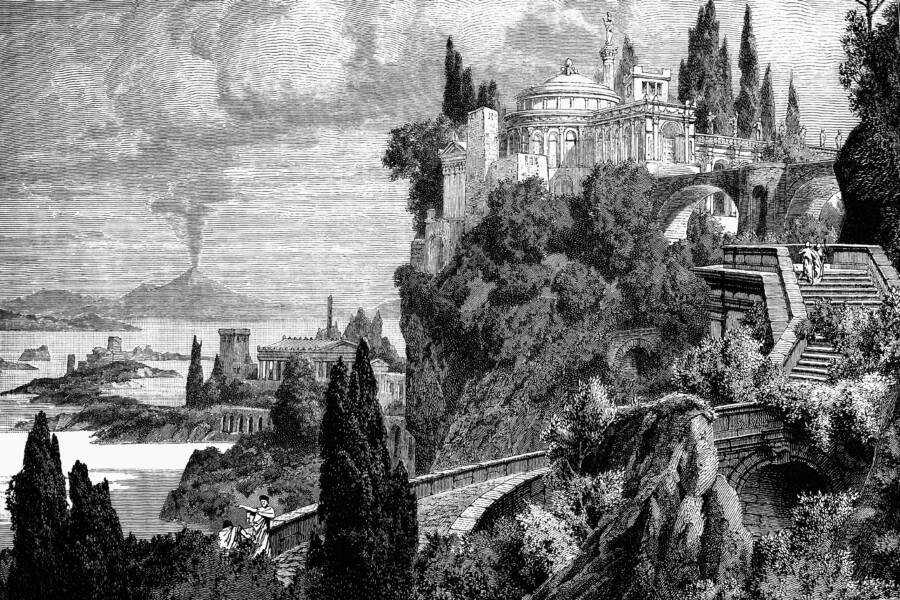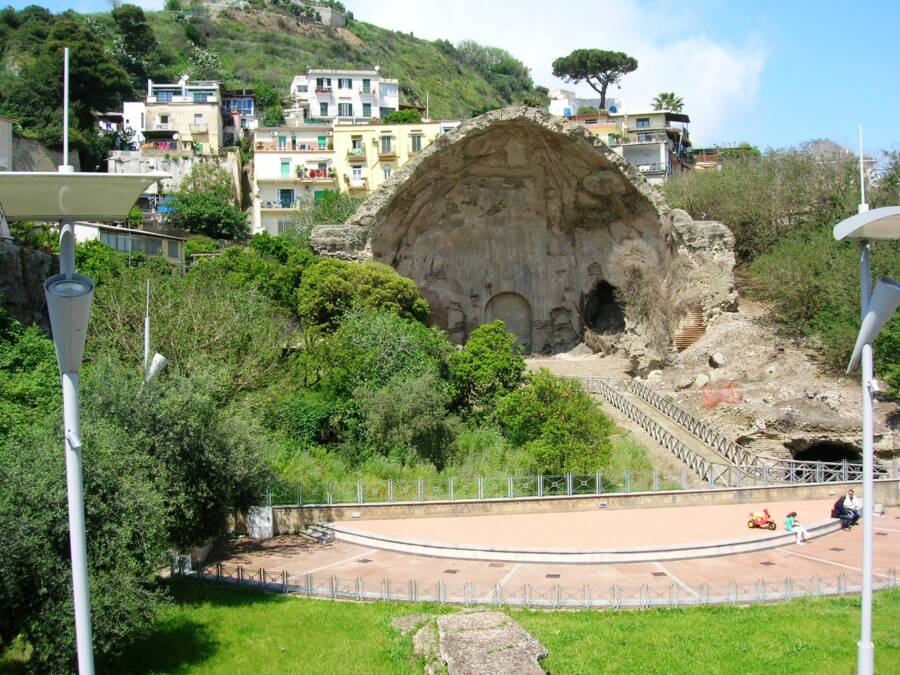Near the submerged city of Baiae, archaeologists found a stunning opus sectile floor that had been built in the last days of the Roman Empire.

Edoardo Ruspantini/Parco Archeologico Campi FlegreiArchaeologists working on the restoration of the opus sectile floor in Bacoli.
An underwater restoration project in Bacoli, Italy has revealed the marvelous marble floor of a submerged Roman villa. This comes as part of an ongoing excavation at the Submerged Archaeological Park of Baiae being carried out by CSR Restauro Beni Culturali and Naumacos Underwater Archaeology and Technology, shedding light on the most historically rich sunken corner of the Roman Empire.
The Stunning Opus Sectile Floor Of A Submerged Roman Villa
In a Facebook post, the Parco Archeologico Campi Flegrei announced the discovery of the stunning marble floor near the submerged city of Baiae, located next to present-day Naples. Per the post, the marble floor “has been the focus of the latest underwater restoration work,” which has been a “very complicated challenge due to the extreme fragmentation of the remains.”
The villa floor is sprawling, comprising roughly 2,700 square feet, built towards the end of the Roman Empire. It is an opus sectile floor, a type of decorative flooring used in ancient Roman architecture, characterized by the use of precisely cut pieces of stone or marble to create intricate geometric patterns or pictorial designs.
Unlike traditional mosaics, which are made up of many small, uniformly sized pieces (tesserae), opus sectile employs larger, carefully shaped pieces that fit together like a puzzle. This technique allows for uniquely detailed and elaborate designs, often incorporating a variety of colors and materials to achieve a stunning visual effect. Opus sectile was commonly used in high-status buildings, such as villas, palaces, and public baths, to showcase wealth and artistic sophistication.

Edoardo Ruspantini/Parco Archeologico Campi FlegreiAn overview of the opus sectile floor, made from various pieces of second-hand marble.
“It is the magic of Baia Sommersa, a marble floor from an ancient Roman villa,” said Bacoli’s mayor, Josi Gerardo Della Ragione. “The floor in opus sectile, with its elaborate geometric motifs and extraordinary craftsmanship, offers a fascinating window into the life and art of ancient Rome. This discovery allows visitors to immerse themselves in history, exploring the hidden wonders beneath the surface of the sea.”
In the Facebook post, researchers noted that this floor seemed to have been made from second-hand pieces of marble, likely to help mitigate the costs for the villa’s owner:
“A very costly and demanding endeavor for the owner of the Villa, who had to settle for recycled materials, that is, second-hand marbles, to create the chosen module, made up of adjoining squares, each with inscribed circles.”

Edoardo Ruspantini/Parco Archeologico Campi FlegreiArchaeologists have been working to restore the villa’s floor along with numerous other submerged structures.
Archaeologists said the restoration project is a “very demanding job,” though it is still ongoing, and they hope to continue to update the public with further progress in the following weeks.
The Story Behind The Submerged City Of Baiae

De Luan/Alamy Stock PhotoAn illustration of what Baiae may have once looked like.
The submerged city of Baiae, also known as Baia, was an ancient Roman town located on the northwest shore of the Gulf of Naples. Renowned in antiquity as a luxurious seaside resort for Roman elites, Baiae was famous for its thermal baths, lavish villas, and hedonistic atmosphere. The town attracted many prominent Romans, including emperors like Nero and Hadrian.
Over time, however, due to volcanic activity and bradyseism (the gradual, alternating uplift and sinking of the Earth’s surface), parts of Baiae sank below sea level. This geological phenomenon caused significant portions of the city to become submerged.

Wikimedia CommonsThe above-ground Temple of Diana at Baiae.
Today, the ruins of Baiae are part of the Underwater Archaeological Park of Baiae, where sunken structures, mosaics, statues, and remnants of Roman architecture can be explored by divers and viewed through glass-bottomed boats.
The submerged city of Baiae provides a unique glimpse into the opulence of ancient Roman life and continues to be a site of ongoing archaeological research and underwater restoration efforts.
After reading about this stunning discovery, learn about 13 incredible underwater cities from around the world. Then, read about history’s most famous “lost city” and go inside the real history of Atlantis.





